How have you enjoyed your summer? Did you make Hor Mok, the Thai fish mousse, with my recipe yet? I have another recipe for you this week, Tod Mun, the Thai fried fish cake recipe using Kaeng Kua red curry paste and fish paste.
I’ve been enjoying the season and have already made my first batch of “Mashi Werak Areech”, Lebanese stuffed grape leaves with lamb, mint, and tomatoes. I even had my first kill, the crawfish (Some of you saw pictures of them walking on my kitchen floor on instagram or my facebook already) It was the first time I cooked them alive…aiyaaaa!
Next I will show you another way of using Thai curry paste. You already know how to use the Thai curry paste to make the soup curries, the sauce and the mousse. We still have more ways of using the curry paste: the dry curry, the soup curry without coconut milk, the stir fried curry, and the fried curry cake. This time we will be making fried fish cake, which was originally called Tod Mun in Thailand. This is another item that you can also put in the rice table set for dinner, though I normally prefer it as an afternoon snack.
Tod Mun in general is made with fish, but sometimes you will see it made with shrimp, pork, chicken and the vegan version which is made with corn and wheat flour. I have heard people in many provinces outside Bangkok call this fried fish cake “Pla Hed” (Pla = fish, Hed = mushroom) which is the Thai way of pronouncing the Cambodian word “Pahut”, the Cambodian fried fish cake.
The different between Pahut and Tod Mun is Tod Mun uses Thai curry paste, either Kaeng Kua or Kaeng Ped (both red in color) as an ingredient and Pahut doesn’t, but Tod Mun and Pla Hed (Thai country name) are the same. You know I like to dig into the history but this time I don’t have quite enough information, so when I go back to Thailand next time I will go to the National Library and do more research about this.
I was first introduced to Tod Mun (or, more accurately, Tod Mun introduced itself to me) when I was only six or seven years old. The vendor in front of my school in Bangkok fried and sold them about ten feet from my school main gate. In Bangkok, way back almost 40 years ago, we still had street vendors who carried their merchandise in two baskets balanced on one flat, wide, long, flexible bamboo stick.
These two baskets were hanging off each end of the bamboo stick and the vendor would carry the stick on one shoulder. They have to balance the two baskets while they walk. You won’t see a lot of them in Bangkok these days, but there are still a lot of them in the country side Thailand and also in the neighbor country such as Vietnam or Laos.
Well, the vendor who sold Tod Mun had very interesting baskets. They contained a charcoal stove, (Yes, the whole stove!) and some charcoal on one side, an aluminum pot containing oil for frying the Tod Mun, and a lot of dried banana leaf cups to be used as containers for the finished Tod Mun for customers. We were not using that many plastic bags back then. A lot of foods were put in banana leaf wraps, or dried banana leaf cups, or paper bags fashioned from newspaper (aghhhh, printed with lead ink, of course). I assume plastic bags were more expensive than these disposable banana leaf products.
Once he settled, he would put the pot on top of the stove, fan the stove furiously to get the charcoal to give more heat until the oil is hot enough, then he start dropping the pre-made Tod Mun batter in the hot oil and the yummy smell of fried fish cake curry would filled the air. It the most irresistible aroma for the children. He was normally surrounded by students and parents waiting to buy Tod Mun for the after school snack.
The merchant was selling little pieces of Tod Mun, each about the size of a half-dollar coin, five pieces for one baht (the exchange rate back then was $1 = 20 baht, so 1 baht was only 5 cents, or a penny per piece!) This included free dipping sauce that they would also pour over the Tod Mun. Oh…such memories…why do I still remember these details?!
These days, if you ever visit Bangkok, you will find street vendors who sell a bag of Tod Mun at 6-8 pieces for 10 baht ($1is now approximately 30 baht, so now they are 5 cents apiece–a 500% increase!) Anyhow, we’re not going to Thailand to buy Tod Mun anytime soon so we’re going to make them here
Ingredients
Fresh fish paste 500 g or roughly 1 lb. (This is not the fermented fish paste but just the fresh fish flesh, treated until it’s pasty, see note #1)
Thai Kaeng Kua, basic red curry paste, 2-4 tablespoons (or other pre-made Thai red curry paste)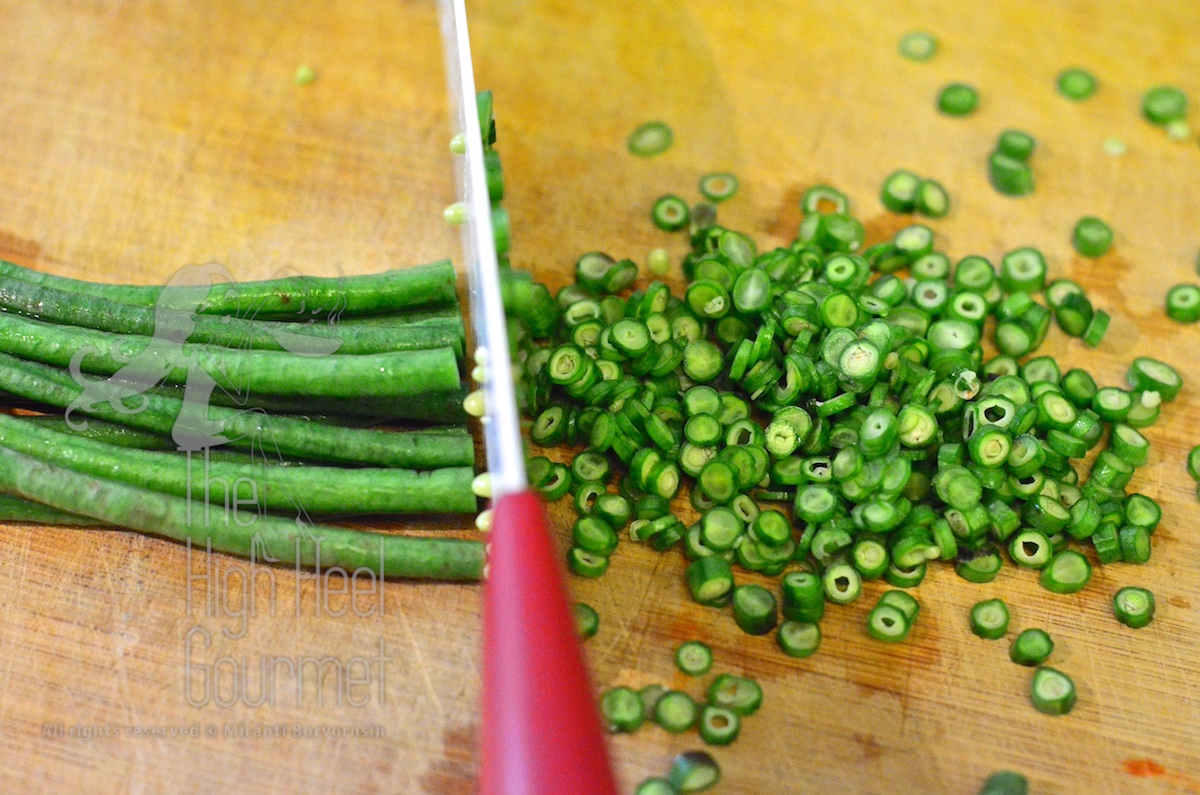
Long beans or green beans, cut thinly, 100-150g
Chiffonaded Kaffir Lime leaves 2-3 tablespoons
Fish sauce
Granulated sugar
2-3 cups of oil, either vegetable oil or lard, for frying
NOTE:
1) Normally you can find fresh fish paste at any Asian market. It either comes frozen in a container or in the fresh fish section. The fish paste needs to be treated with salt and water to make the paste very pasty, comparable to the consistency of Play-doh.
Holy f***…how can fresh fish paste or fresh fish resemble the consistency of Play-doh?!!?! Is it going to happen in this lifetime? Yes, it will.
1.1) First you will have to pick the right kind of fish. I can guarantee you it won’t happen with most (or all) salt water fish. It could happen with some fresh water fish. You could also try the method I’m about to tell you with salmon and it won’t happen either. Do you want to bet with me? 😉
The best fish is either “Featherback” or “Knifefish”, called Pla Grai in Thai. It’s okay if you don’t know what the heck they are. In fact it is quite typical to not know. It’s not native fish of the West anyway, but this is the type of fish that yields the best result. If you can’t get featherback, then catfish, bass, trout, shad or herring should be good enough (I just chop the heads and tails off, then clean, scale, gut the fish and chop the remaining parts, including their soft bones and thin skin.)
Other than small fish such as shad or herring, you wouldn’t use the skin, so just scrape the flesh off the bones and skin. To thicken the paste, you can use a food processor, or blend using the dough hook in your stand mixer, or use the traditional method of pounding it with a mortar and pestle, or just massage the fish flesh until it is sticky. With EVERY METHOD you will need salt water and some way of cooling to make the paste sticky.
If you are lucky enough to be able to just buy fish paste, check the consistency. Most fish paste is still not sticky or bouncy enough. You still need to treat it with salt water anyway. Remember, Play-doh consistency. Follow the rest of the method if your store-bought fish paste isn’t sticky enough. If you are using frozen fish paste, you will definitely need to treat it a little.
1.2) Make salt water by mixing about one teaspoon of salt with half a cup of water. This is for approximately one pound of fish flesh, or roughly 450-500g. If you are using a food processor, get about half a cup of ice cubes and add it in the food processor too. If you are using the stand mixer or traditional method, chill the fish until it is really cold, but do not freeze the fish.
1.3) Now we’re ready to process. If you are not using the food processor method where you will add the ice in the process, add another 1/4 cup of water to your salt water.
1.3.1) Using a food processor: Turn on the food processor and mix the mixture at least 5 minutes. It may take as long as 10 minutes depend on your motor power. You will eventually get the fish paste very, very sticky, and that’s when it’s done.
1.3.2) Using a stand mixer: Put the extremely cold fish paste in the mixer bowl, attach the dough hook, add about 2 tablespoons of salt water mixture and start turning it at high speed for 3-5 minutes or longer, watching to see if the paste is getting stickier. If it is, add more salt water mixture and turn it at a lower speed. Keep doing it until you get that Play-doh consistency. Keep lowering your speed or you could burn out your motor. Check the temperature. If the mixture is getting warm, stop the machine and chill the paste before you start again. You can add a bucket of ice water around the bowl if you are using a mixer with a suspended bowl.
1.3.3) The traditional method: Dip the pestle in the salt water and then start pounding the paste in the mortar, stopping often to dip your pestle in the salt water. Also check the paste temperature often, chilling it again if needed.
1.3.4) Massaging (or slapping) it by hand: you can put the paste in a plastic bag or a ziplock bag, then add the salt water, only a tablespoon or two at a time, and seal the bag. Throw the bag against the side of a bowl or the counter hard, then pick the bag up and throw it again.
This is a very, very good method if you are mad at someone–your spouse, your customers, your boss or your president (just examples, you know–not true for me!). Throw the bag pretending that this is your grrrrrrr people. It’s very satisfiying, I’m telling you. Soooooo, satisfying! You can even put a picture of their face on the bag, just to add another level of satisfaction.
Open the bag and add more salt water when you see that it has already blended well with the fish paste. Continue doing this until you get that desired Play-doh consistency. It can be easily over-done (no real harm is done).
I did…LOL…put the picture of a client such as Sheldon Adelson on the bag when I was working with the Venetian Hotel account years ago and he pushed me over the edge!Also, Michael Bay and Jerry Bruckheimer pictures received the same honor while I was working on the website for the Pearl Harbor movie, and I had such a great time I didn’t even realize the fish paste was beyond ready. It was so sticky I had to use a potato masher to mix all the other ingredients in.
1.3.5) If you live in Los Angeles: then go to Bangkok Market on Melrose Ave. and buy their fish paste like I did. 🙂
IMPORTANT: If you are using fresh or frozen fish paste, check the taste of the paste first. They might have already salted it, so you don’t want to put any more salt in it. Just use 1/4 cup of plain water, and do not add more than 1/2 cup because they might already have added water as well.
Method:
1) Mix the curry paste with the fish paste, at first by using the same method as how you treated the fish. At this point you should have a very, very sticky paste, so you can’t even use a spatula to mix all the ingredients in that easily. You can use a potato masher or hand-held mixer, if you would like to wash another kitchen tool. I normally just use the same method I started with unless the fish paste is too dense, like this time.
Some Thai fried fish cake recipes might tell you to add an egg; some would use only the whites, and some would use only egg yolk, while others would use the whole egg. My recipe doesn’t use egg. I found that using an egg does make the fish cake expand so much more when fried, but then it shrinks down after it’s taken out of the hot oil and is soaked with fry oil, much more so than just using eggless fish paste.
2) Add the thinly slice green beans or long beans
and chiffonaded kaffir lime leaves.
You can use the food processor, mixer, mortar and pestle or the bag, but use it at the lowest setting or do it gently so you won’t crush the beans. You want to keep them crunchy.
3) Test the taste of it by putting about a teaspoon of the paste in a small bowl and putting it in the microwave for 15-20 seconds to cook it. Or if you prefer, you can fry it.
4) Adjust the taste with fish sauce and sugar to your preference. Now you are ready to fry the Tod Mun.
5) Put the fry oil in a wok or pot, setting it on the stove over medium high heat. You want the oil to be hot, but not too hot. Too hot oil will yield a dark color or maybe even burn the Tod Mun on the outside and not cook the inside. Too low temperature will cause the fish cake to be oily as it is absorbing too much. You might have to try a few pieces to learn the right temperature setting.
My oil temperature is about 300-330 degrees Fahrenheit (150-165 degree Celsius) BUT you can’t use this as an exact guide because there are so many factors. My fish paste might contain more or less vegetables, water content, curry paste, etc. than yours, so go by the frying result. The ideal temperature for you is when the fish cake is cooked through and slightly darker and crispier on the outside but tender on the inside. It shouldn’t have to stay in the oil more than 3-5 minutes.
6) Use your hands (it’s easier in latex gloves) to form the fish cakes.
Or use two spoons, one to form the fish cake,
another to push the fish cake out of the other spoon.
Drop the fish cakes in the hot oil one at a time, until you have five or six pieces of the fish cake in the hot oil. By the way, if you alone can figure out how to drop more than one cake in the hot oil at a time, I want to see that! Leave some space for the fish cakes to expand. Once you see the bottom part is cooked, flip the fish cakes and let the other sides cook too.
7) Take the fish cakes out of the hot oil and let them sit on a piece of paper towel to absorb the excess oil.
Voila–Tod Mun is ready to be eaten!
Oh wait…You might want the dipping sauce! I have a cheating method. If you have Nam Jim Gai or Thai sweet chilies sauce or Spring Roll Sauce, just mix it with cucumber,
crushed peanuts, and cilantro.
If you don’t have it, here’s the recipe!
Dipping Sauce Ingredients
Vinegar 1/2 cup
Granulated Sugar 2/3 cup
Salt 1 teaspoon
Crushed peanuts 1/4 − 1/3 cup
Cucumber, sliced 1/4 − 1/3 cup
Red chilies, sliced for garnish
Chopped cilantro or pick only the leaves, for garnish
Dipping Sauce Method
1) Boil the vinegar, sugar and salt together. Let it rolling boil until the vinegar stink evaporates. Let it cool down before adding the vegetables and peanuts.
Enjoy!

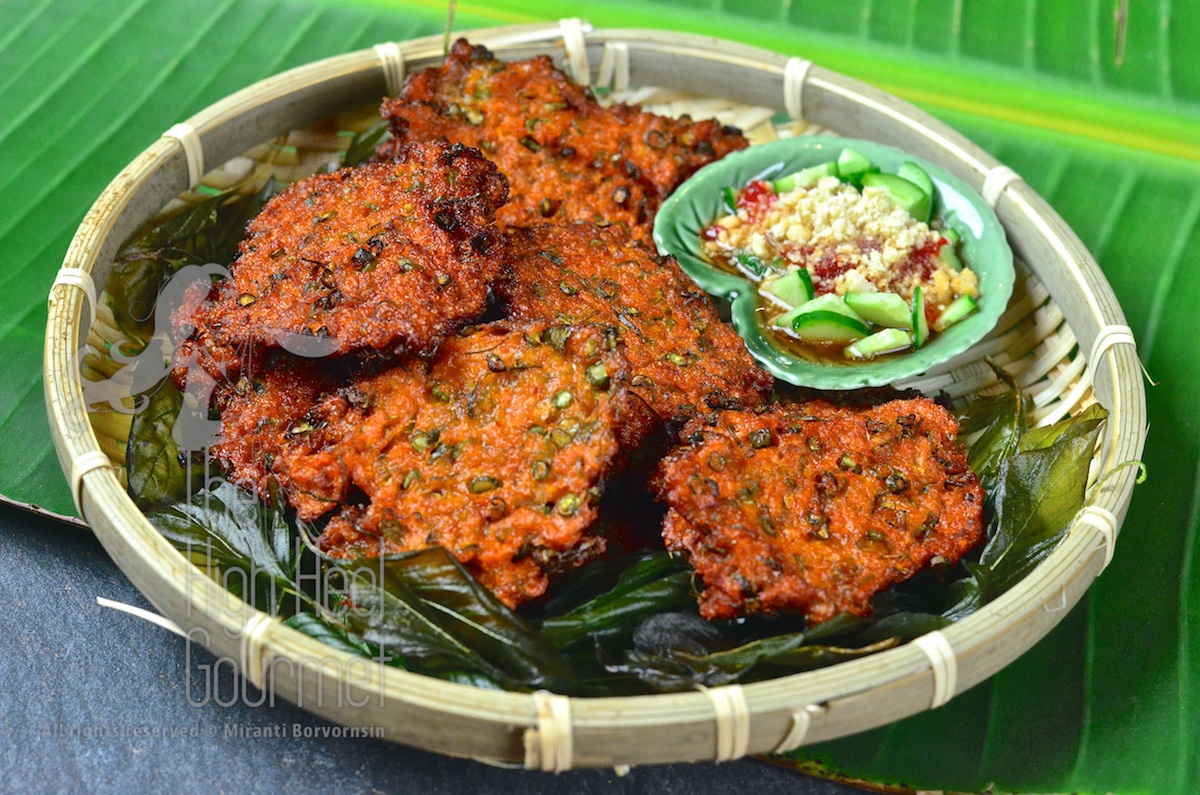
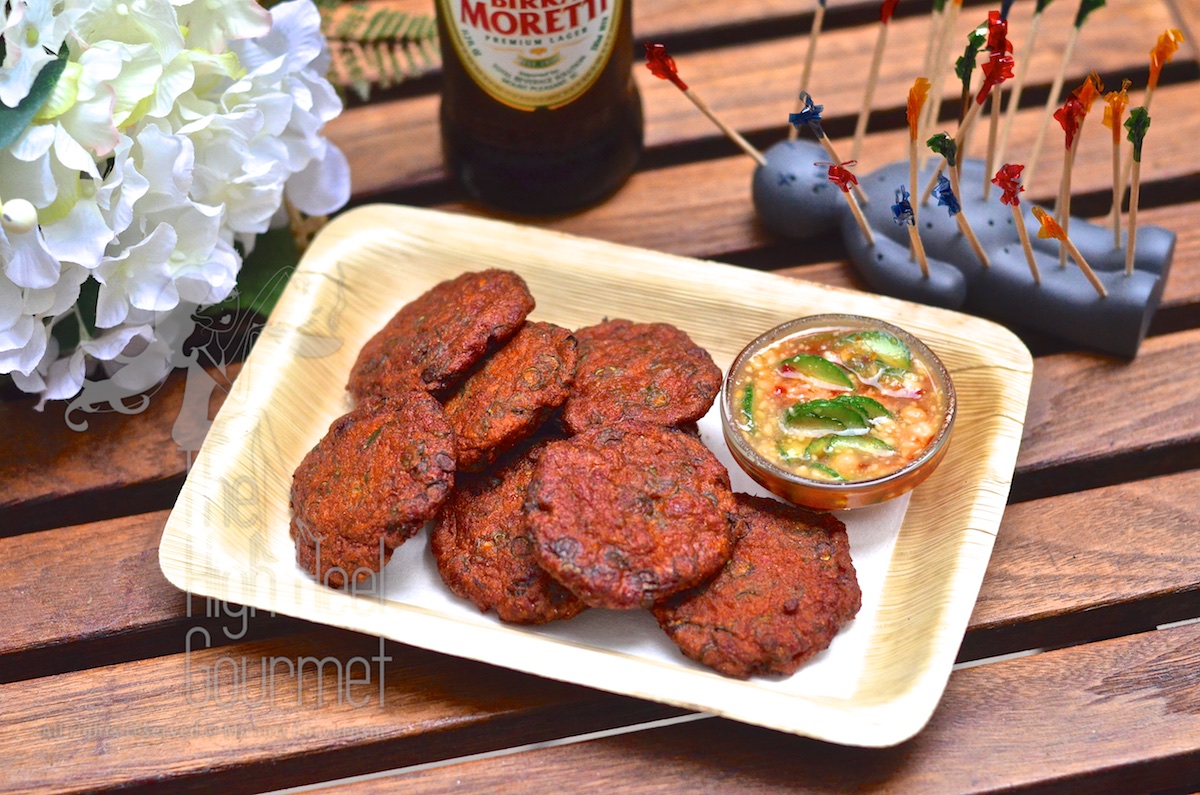
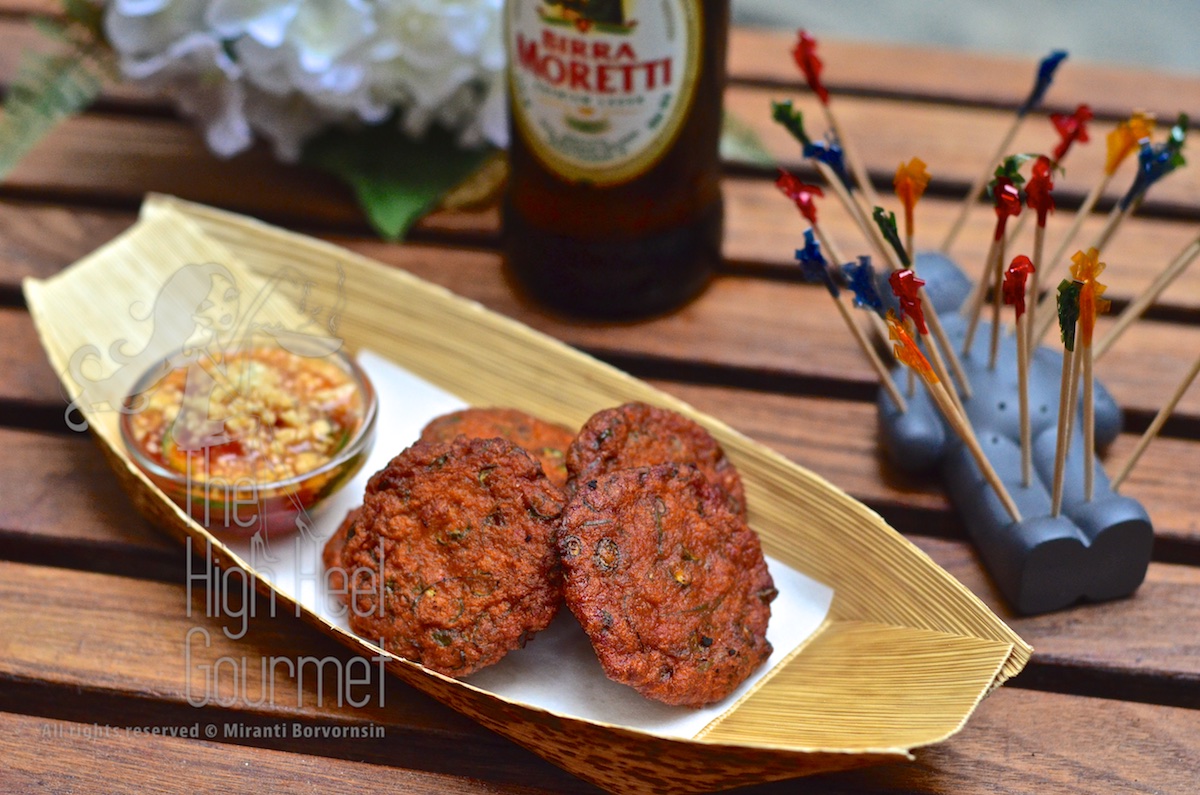
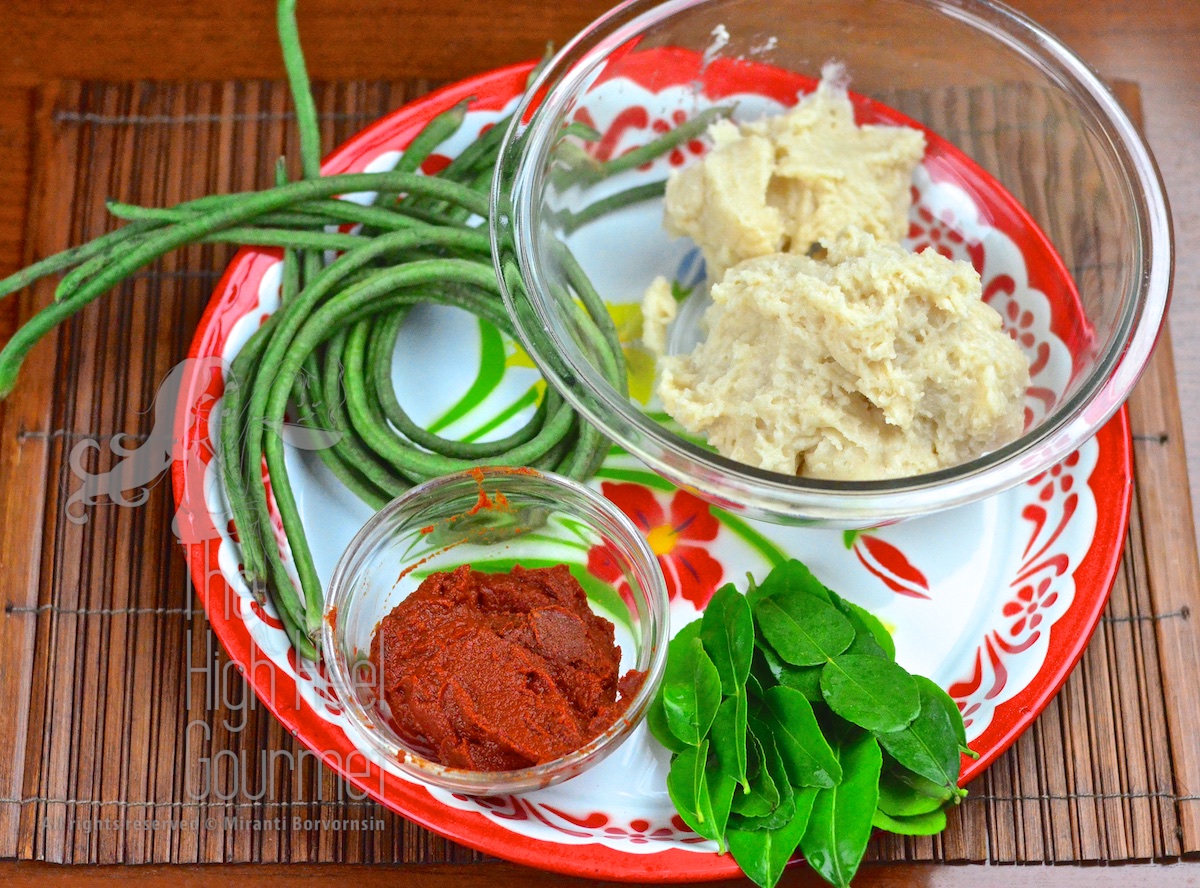
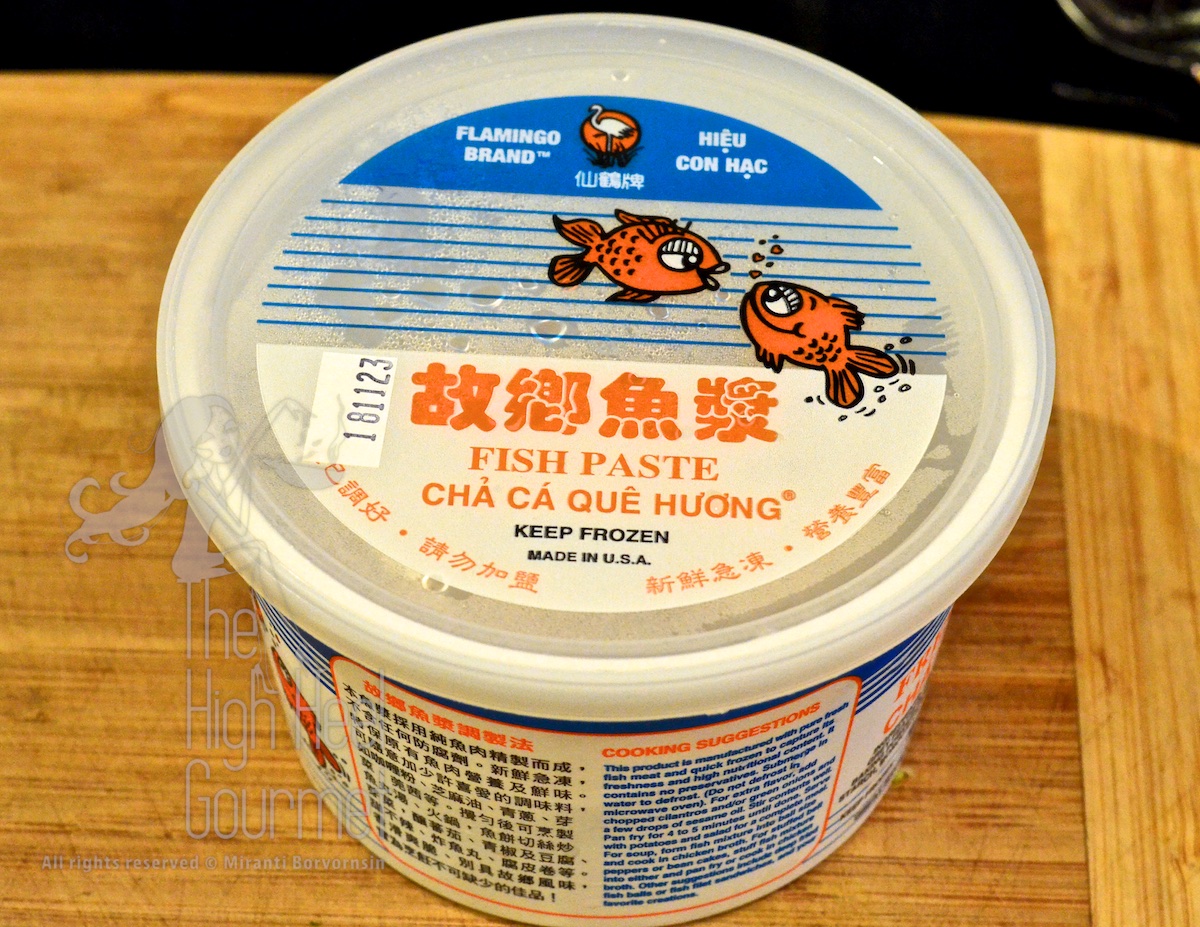
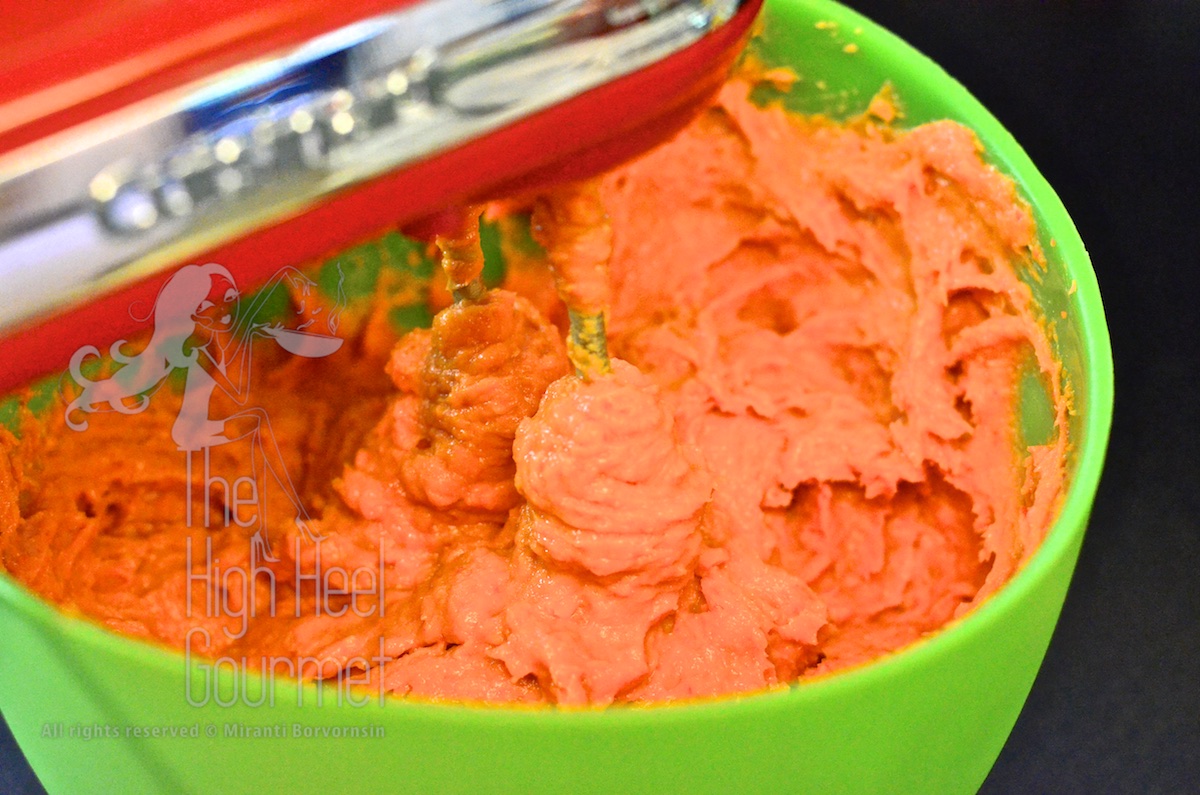
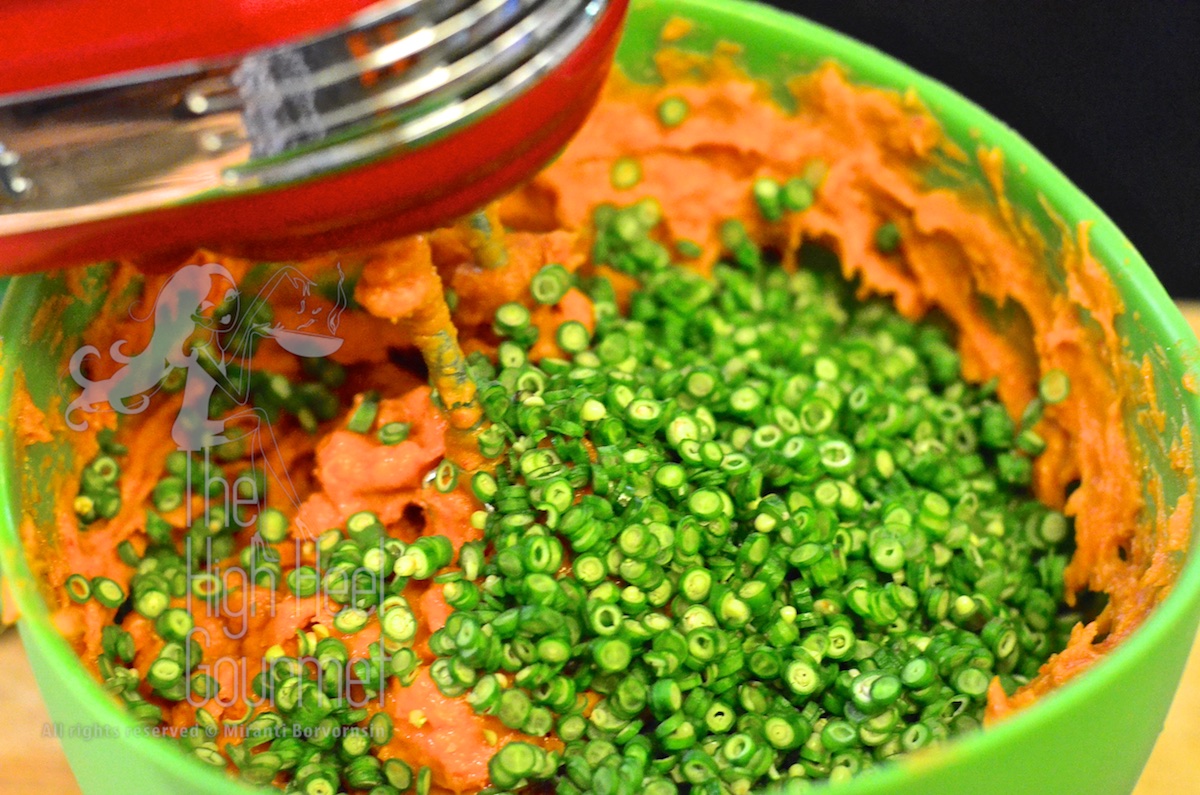
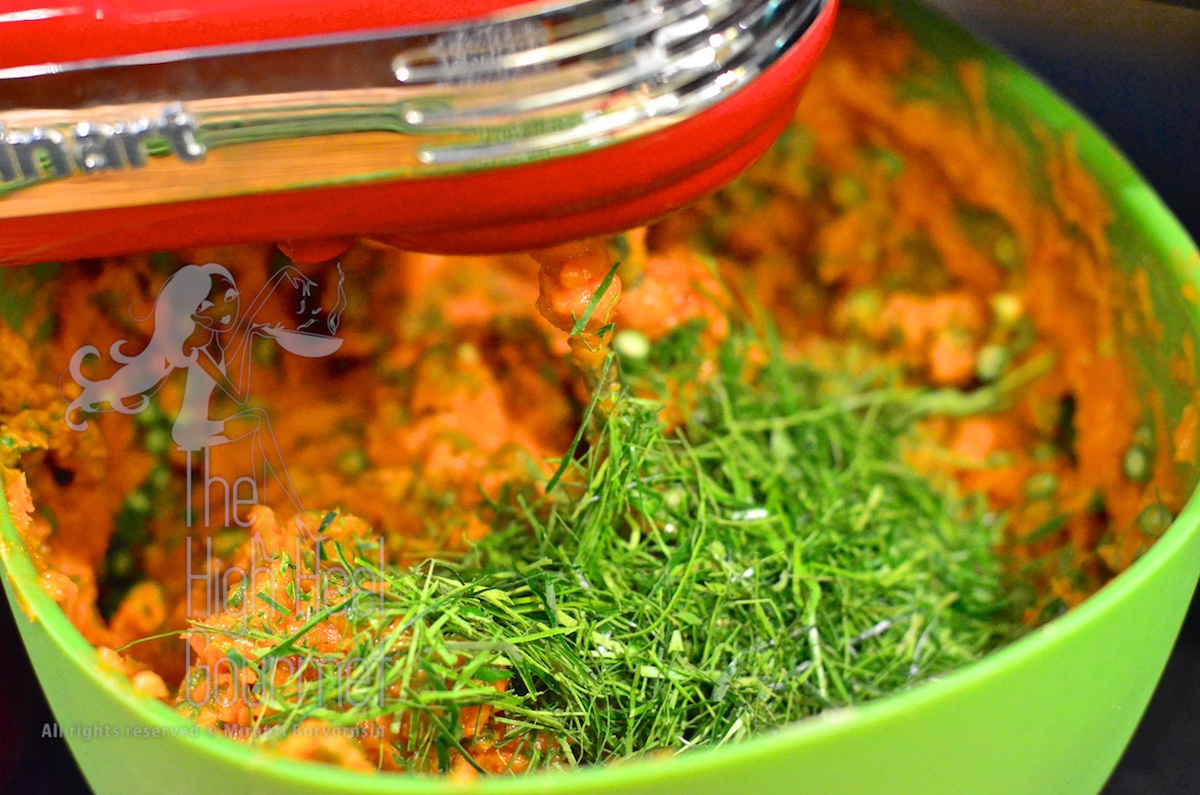
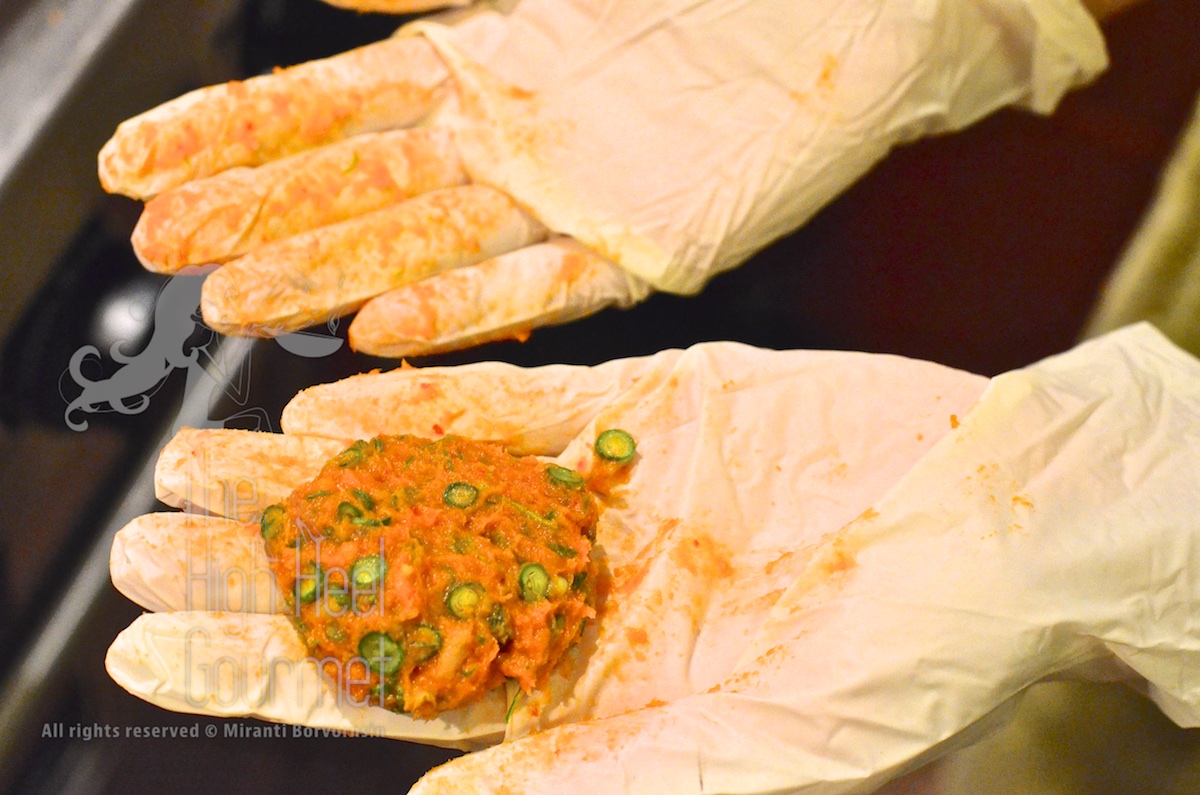
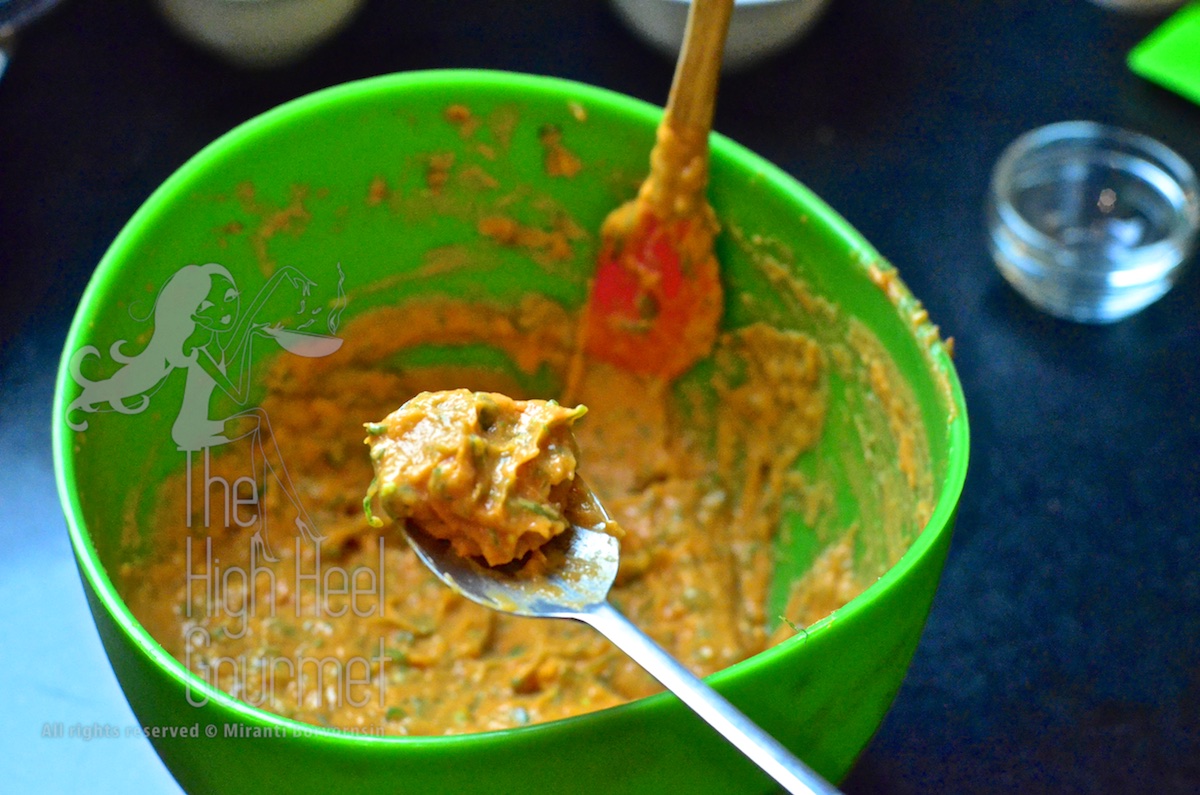
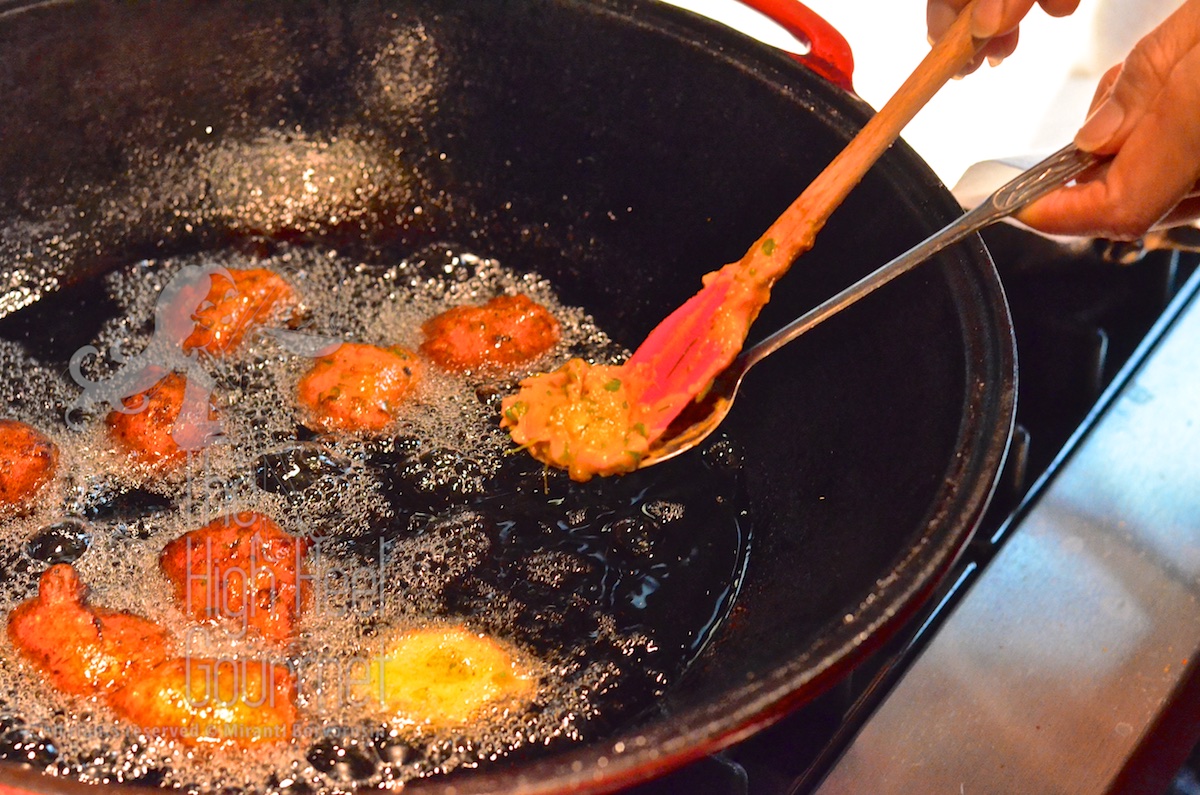
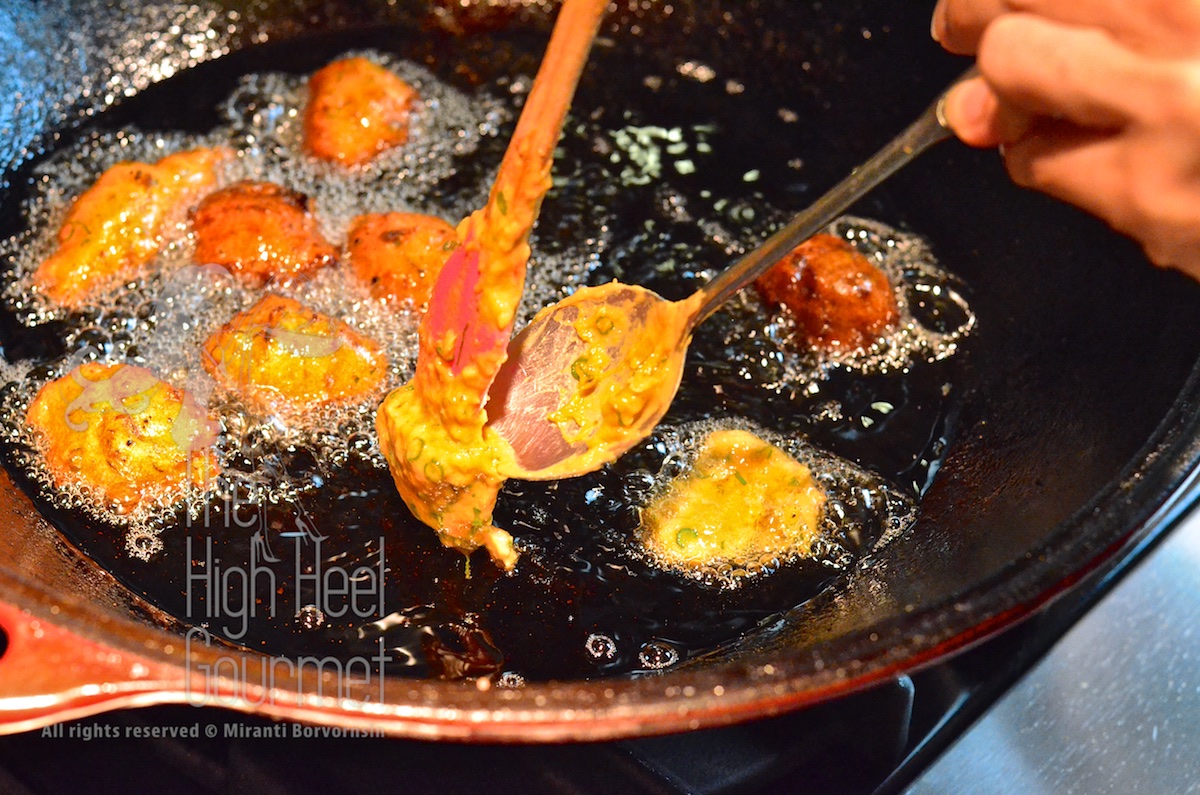
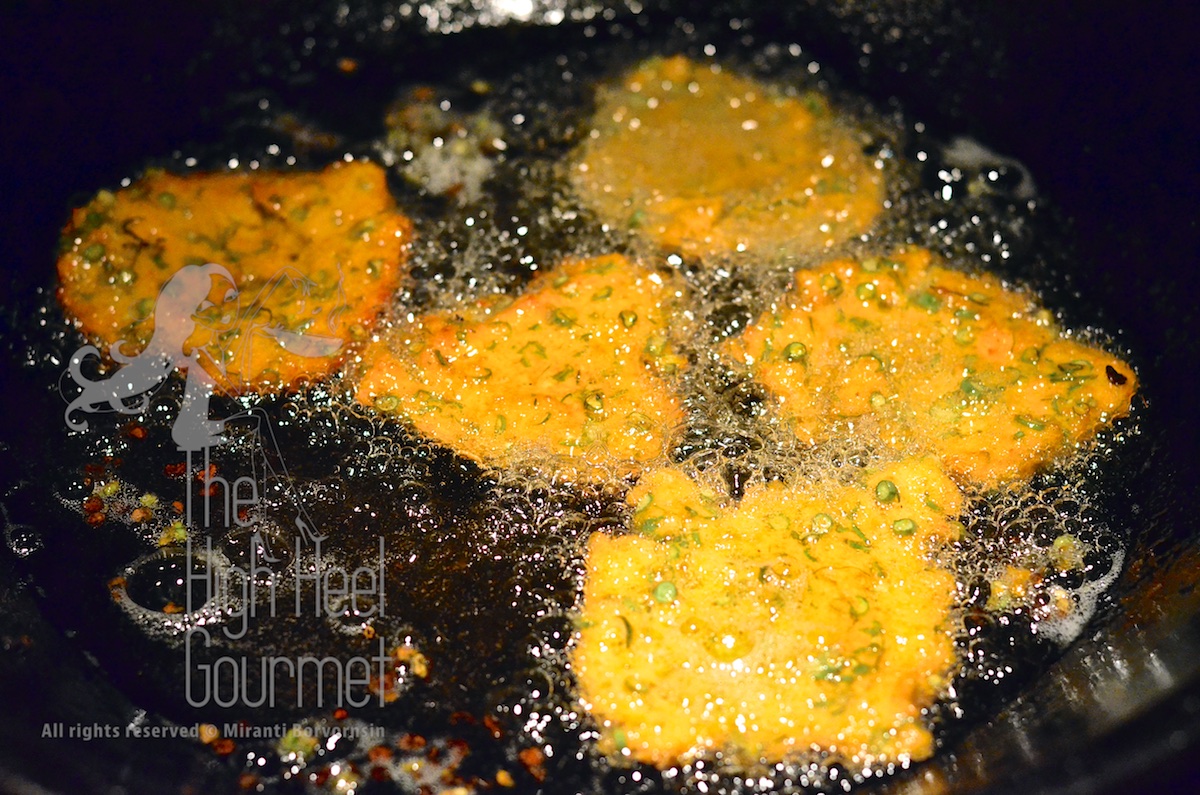
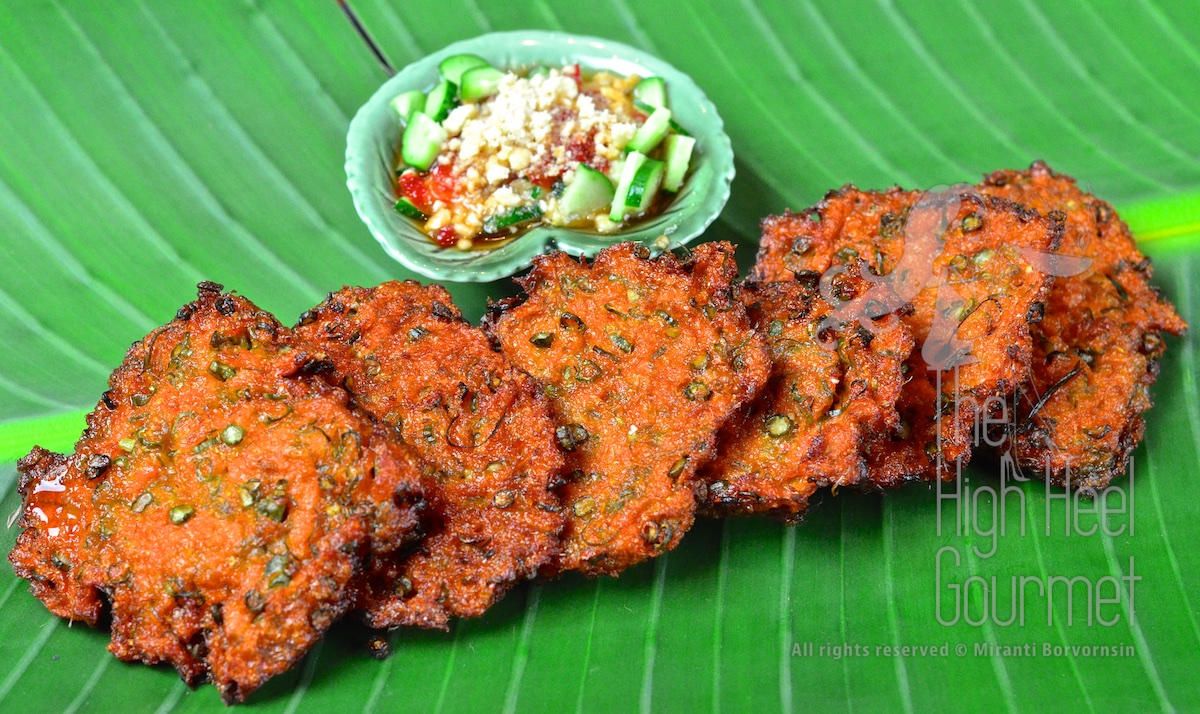
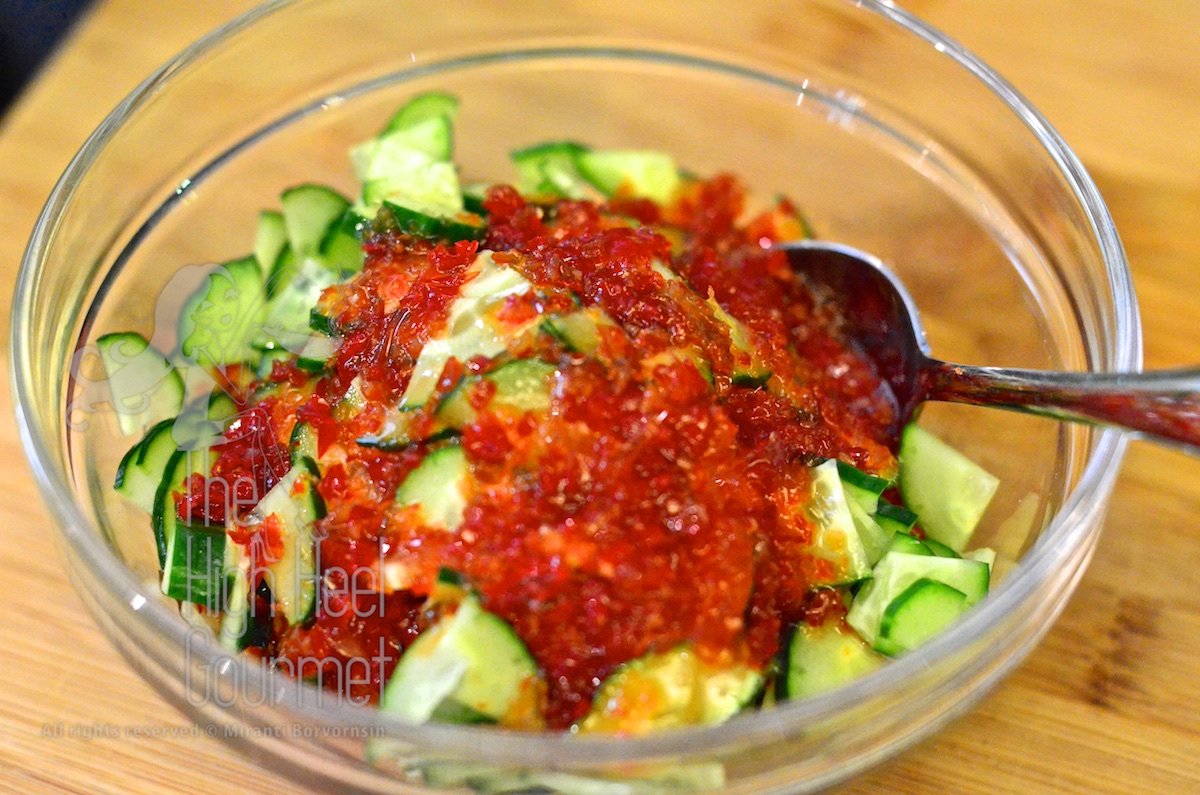
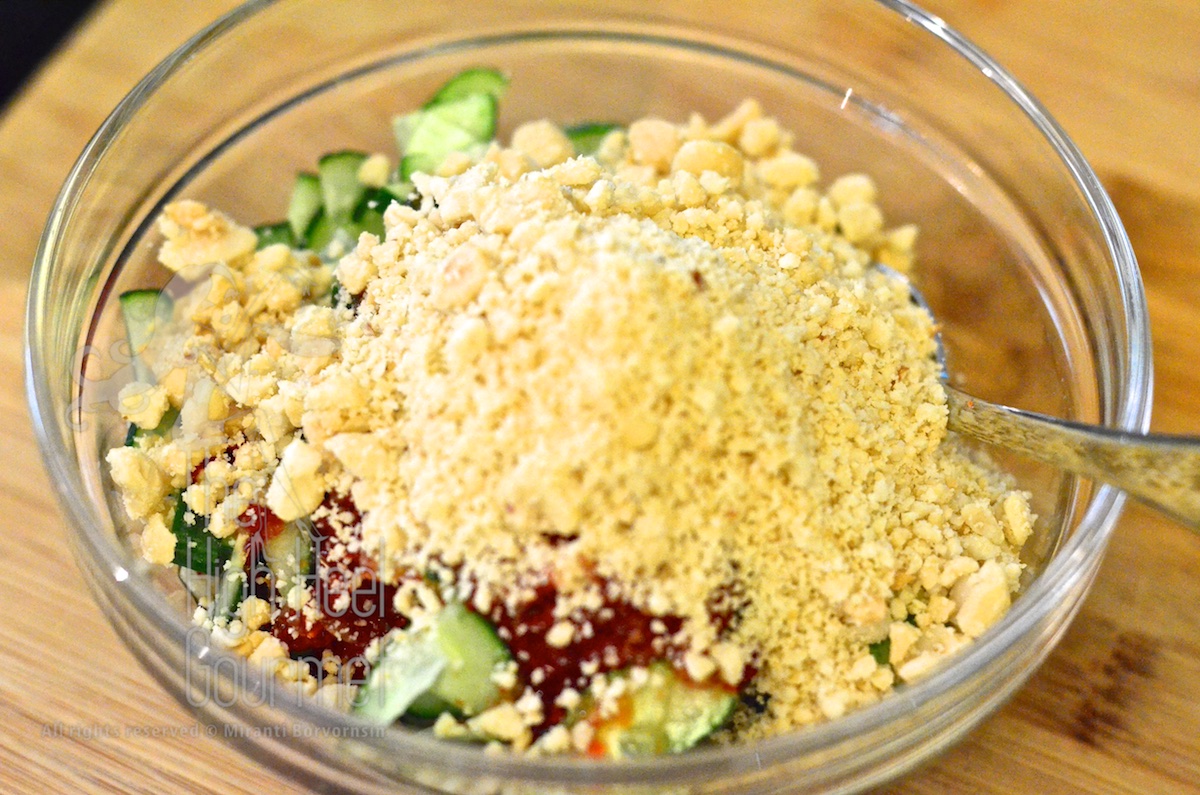
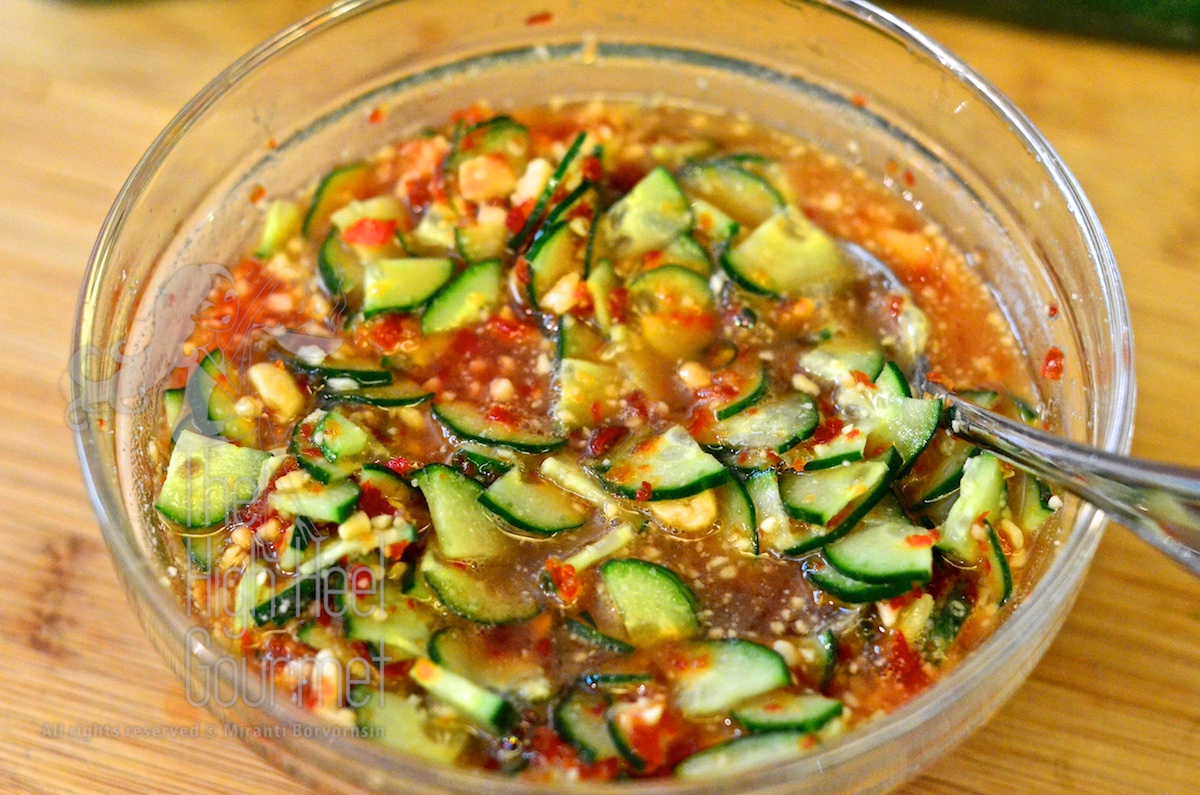
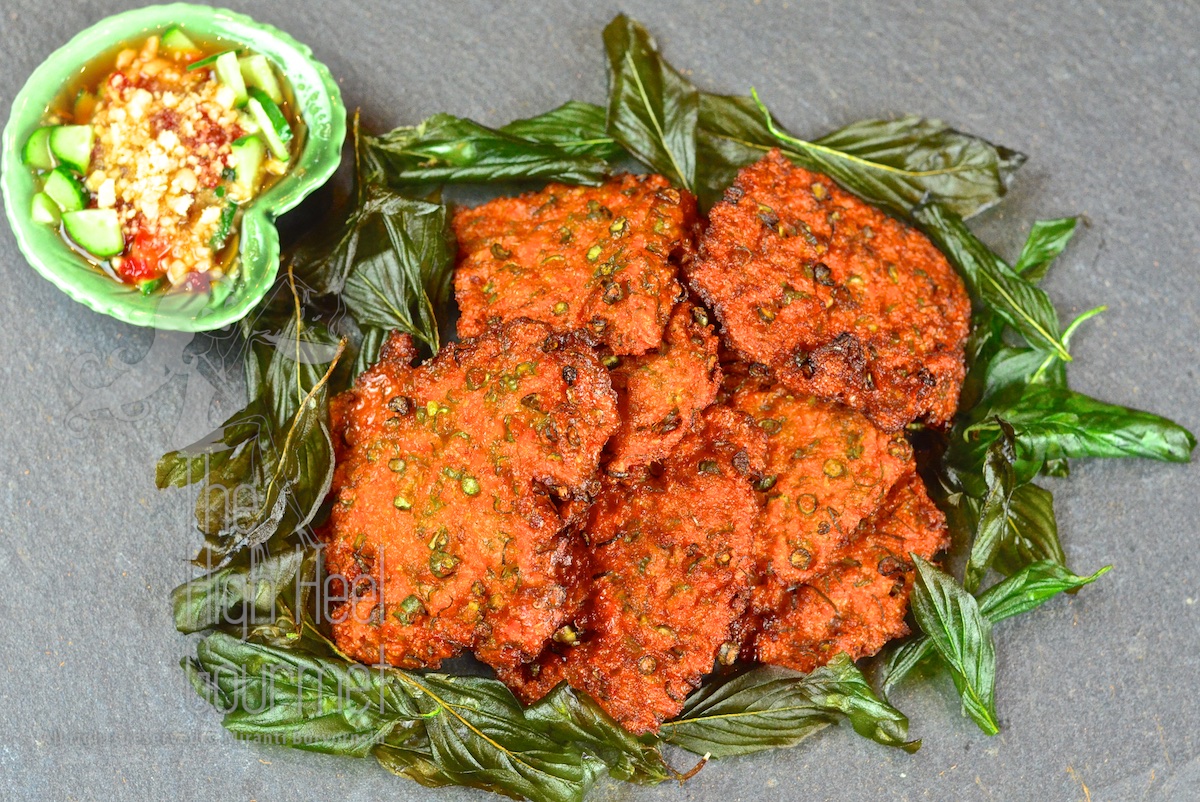
This one seems easy enough to follow and the results look appetizing. I’m usually content to go to a restaurant for Thai but it is fun to try some things myself.
It looks so delicious, and I am sure it is. Please come over to Germany (Cologne, to be more specific) and open a restaurant here 🙂
I will have to try this. It looks so good! And thanks for sharing your memories of this dish. I enjoy that part just as much.
I spy with my little eye 2 forms of venting: 1) throwing fish paste at a grr person’s pic, and 2) sticking pic of said person’s face on the toothpick voodoo doll. What a marvellous post with stunning pictures; must’ve taken you hours to put together. Well done.
No no no no no, you got me wrong!
I put the picture on the bag itself…and then throw the bag heehee…like you really beat up the person…that’s how it properly done. BTW the voodoo doll, doesn’t work 🙁 The darn face I put on voodoo head still yelling at me after I poke poke poke poke poke the voodoo doll…(aren’t they suppose to be in pain until they have to stay home, right)…just FYI…
You’re hilarious. I’d be very careful with circulating my photo if I were your colleague…
They look crispy and gorgeous!
Love everything fish and specially when it is Thai! This recipe is slightly different than the one I have in a cook book so I am going to try this one soon. In the past I used fresh fish fillet that I put through a food processor to make the fish paste. Your method of buying the paste is so much easier 😀
That looks so delicious! Thanks for stopping by my blog.
✿ღ✿ღ.¸¸ღ♫*¨`*•..¸ƸӜƷ ✿ღ ✫❀
Sindy
Fantastic recipe as usual but i especially like your 1.3.4) lol…
It looks fiery HOT! I am intrigued! 😀
Must try the recipe!
Add more chilies, Hari. I think you eat spicier food than me.
I have pretty good tolerance towards spicy food but these got flaming color! 😀
Reblogged this on This Got My Attention and commented:
OMG, this looks and sounds soooooo good!
O.M.G that looks so delicious ! 🙂
this looks amazing. I will certainly be giving this recipe a go. Thanks for the inspiration
I have never heard of fish paste before this…but I can see how the curry will contrast well with it. (I assume it would be similar to “kamaboko” although it is steamed?)… I also wish I had as good as your skills with the knife! but the voodoo doll thing…!
Voodoo doll is only the toothpick holder…no black magic…or I would think…it wasn’t ENOUGH! Or else…people would have…! Isn’t it a great thing to have…muahhahahahaha!
I am still too lazy to do all of this BUT just reading the recipies and your posts, just makes me happy and I “think” of the tastes in my head. AGAIN, I say thanx Miranti for clicking along! dru
This is a really interesting post. I’m curious if you chose the species of fish for paste because all of them exist, at least part of the time, in fresh water, or because those just happen to be the best fish for fish paste. I ask because buying fresh herring or shad is very difficult here. Mainly, i think, because they’re so boney–you almost never see them fresh, only pickled or preserved (I don’t think I’ve ever seen shad, unless it’s been cooked or “planked” at one of the annual shad festivals in New England). Would, for example, freshwater trout work? Bass, unless you’re talking about sea bass or striper, both saltwater fish, is also usually only available if you catch it from a lake yourself. Thanks. Ken
I think it’s both. The fresh water fish is readily available near by home and they has less fat or has type of flesh that made better paste. I think the salt water fish has more fat content and that could prevent the paste from bonding together and make the sticky paste.
I still has more tricks. If you can’t find the fresh water fish to make fish paste or too far away from Asian market, you can use any fish and add egg white to help the bonding. 1 egg white (about 45-50g) to 250-400g of fish flesh. Then pound it, massage it, pulse it in food processor should increase the bonding when you make paste.
Shad or herring with bones are the texture that the Cambodian “Pahut” maker are looking for. I’ve heard the Cambodian assistant chef complain that the catfish or feather back fish Tod Mun which has smooth texture were not as good because they didn’t have the crunchy texture of the small bones that they’re used to in Pahut.
I didn’t know that the shad or herring were all to be used pickle…yummy. My husband is a Rhody boy who doesn’t really like fish and of course hate anchovy, pickle herring and etc…(how possible?!?!)…I want to go to shad festival. When and where is that?
There are lots of opportunities, particularly in April, in Virginia. If you Google “planked shad Virginia” quite a few will pop up. The most well-known is in Ruritan,VA. Ken
Also, there’s annual event on June 1st in Essex, CT, which you can learn about here: http://www.essexrotaryevents.com/55th-annual-shad-bake
Now I’m angry. For some reason I thought it was in early July. Drat! I missed it. Next year, for sure! Ken
Yum this looks delicious! I like fish cakes when they are done properly- not chewy and rubbery, and these look great!
This looks amazing! I love all kind of fish cake and fish balls. I am going to try this soon. Thanks for sharing.
My son loves Thai fish cakes. You describe your dishes so well that even I have the confidence to at least give them a try
Yay…I’m glad your son loves it! I told you, my husband almost couldn’t tell there is fish in it. He probably thought I put too much fish sauce in the cake until I told him there is no other meat but all fishes. Good trick to get kids (or stubborn fish hater adults) to eat fish and vegetables. 😉
Oh my.. I’m drooling here!!
I haven’t touched Playdoh in well over 20 years! Perhaps I should search our Asian grocer’s frozen food section a little more thoroughly before attempting to make the raw fish paste. Cuz I do love tod mun.
lol…I recommended it. If you have Ranch 99 market near by, they carry the one in the bucket and they also they usually have them in the fresh fish counter.
I haven’t touched Playdoh in well over 20 years! Perhaps I should search our Asian grocer’s frozen food section a little more thoroughly before attempting to make the raw fish paste. Cuz I do love tod mun.
Definitely going to make this. Your recipes are always so detailed that I feel confident that I can make this and will know what I am doing. Also love the story about the slapping method with a photo on it. Thanks, Miranti!
haha…I don’t do that anymore since now I’m a wise woman 😉 (at least until the next person piss me off anyway).
Hi Miranti, I tried to make these fish cakes tonight for the first time. The flavor was wonderful. I tried to make the fish paste from frozen “pangasius” catfish, which is a fresh water fish from Vietnam available here. Although the fish paste did become sticky in the food processor, the fish cakes were not as firm as they are supposed to be, and they got a ‘beard’ when I fried them. So I will have to try again with another type of fish, or perhaps I can find fish paste in an Asian store somewhere.
P.S. I did manage to find garlic chives, which I’m going to use to make Pad Thai soon 🙂
Howdy! Would you mind if I share your blog with
my zynga group? There’s a lot of people that I think
would really appreciate your content. Please let me know.
Thanks
Sure